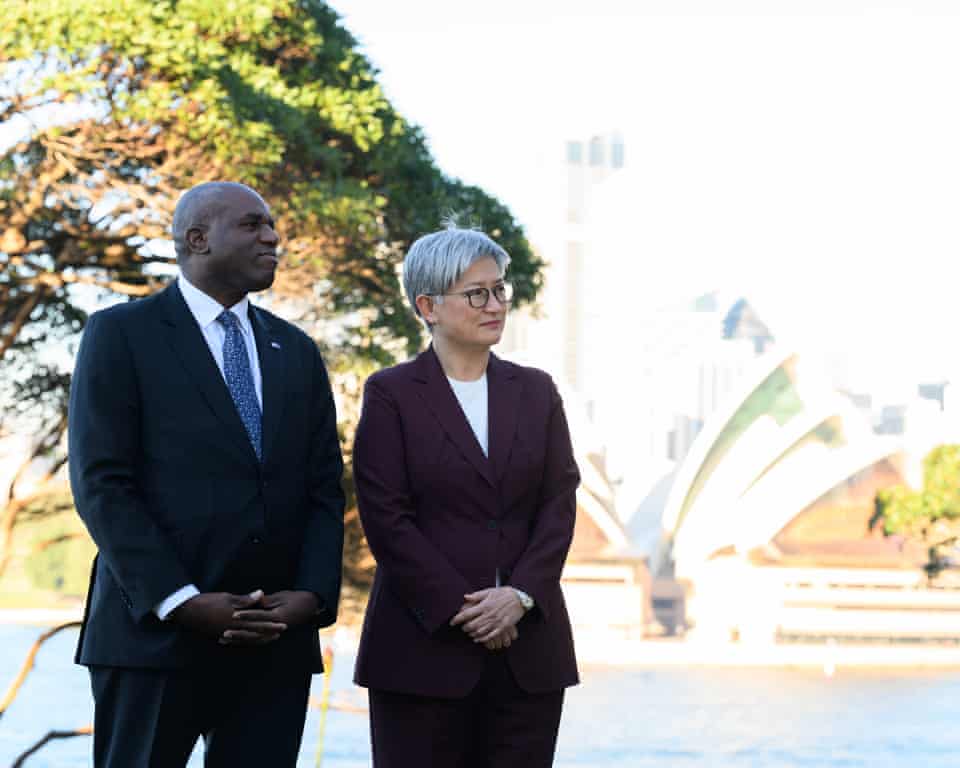Australia and the United Kingdom will sign a landmark 50-year defence treaty this weekend to bolster their partnership under the Aukus submarine pact, even as the United States, the key partner in the trilateral alliance, hesitates amid a review of its commitments.
The treaty, to be formally signed on Saturday, will be announced on Friday following the annual Australia-UK Ministerial Consultations (Aukmin) in Sydney. Foreign Affairs Minister Penny Wong and Defence Minister Richard Marles will be joined by their British counterparts, Foreign Secretary David Lammy and Defence Secretary John Healey, to unveil the agreement.
Notably, the US is not a party to the treaty, which underscores the strengthening bilateral defence and industrial ties between Canberra and London. The deal comes as the Trump administration reassesses whether the Aukus submarine deal aligns with its “America First” doctrine, raising questions about the future of US involvement.
Although full details of the treaty have yet to be released, it is expected to provide a broad framework for cooperation on the development of nuclear-powered submarines under the Aukus programme. The first submarines in the new class will be built in the UK, with Australian production to follow in Adelaide.
“The UK-Australia relationship is like no other,” said UK Foreign Secretary David Lammy. “In our increasingly volatile and dangerous world, our anchoring friendship has real impact in the protection of global peace and prosperity.”
The treaty will also strengthen economic collaboration, particularly around industrial capacity, with Australia already committed to investing around $4.6bn in British industry to support reactor development for the future Aukus submarines.
In a joint statement, Wong and Marles said the treaty represents a critical alignment of strategic and economic interests. “We take the world as it is but together, we are working to shape it for the better,” Wong stated.
Under the broader $368bn Aukus programme, Australia is expected to purchase at least three Virginia-class submarines from the United States beginning in the early 2030s, before transitioning to domestically produced Aukus-class vessels. The first Australian-built submarine is anticipated to be in the water by the early 2040s.
However, the US leg of the pact has been thrown into doubt by a review launched by the Trump administration, led by Pentagon Undersecretary of Defence for Policy, Elbridge Colby. A known sceptic of the agreement, Colby has warned the deal could undermine US naval strength at a time when America’s submarine fleet is operating at just 75% of its target and producing vessels at half the necessary rate.
According to the Aukus agreement, the US president must certify that the sale of any submarine to Australia does not compromise American undersea capabilities, a clause now under intense scrutiny.
While many analysts believe the US will ultimately reaffirm its Aukus commitments, speculation persists that Washington may demand additional concessions. These could include increased financial investment from Australia or explicit diplomatic support in the event of a US conflict with China over Taiwan.
In a show of solidarity and presence in the Indo-Pacific, the UK’s carrier strike group, led by HMS Prince of Wales,narrived in Darwin on Wednesday as part of the Talisman Sabre multinational military exercises. It is the first UK carrier strike group to visit Australia since 1997.
The task force includes five ships, 24 jets, and 17 helicopters, and underscores Britain’s growing engagement in the region. Ministers Marles and Wong will join their British counterparts in Darwin on Sunday to observe operations.
UK High Commissioner to Australia Sarah MacIntosh described the strike group’s arrival as a symbol of the nations’ enduring commitment. “This is an anchor relationship in a contested world,” she said.



